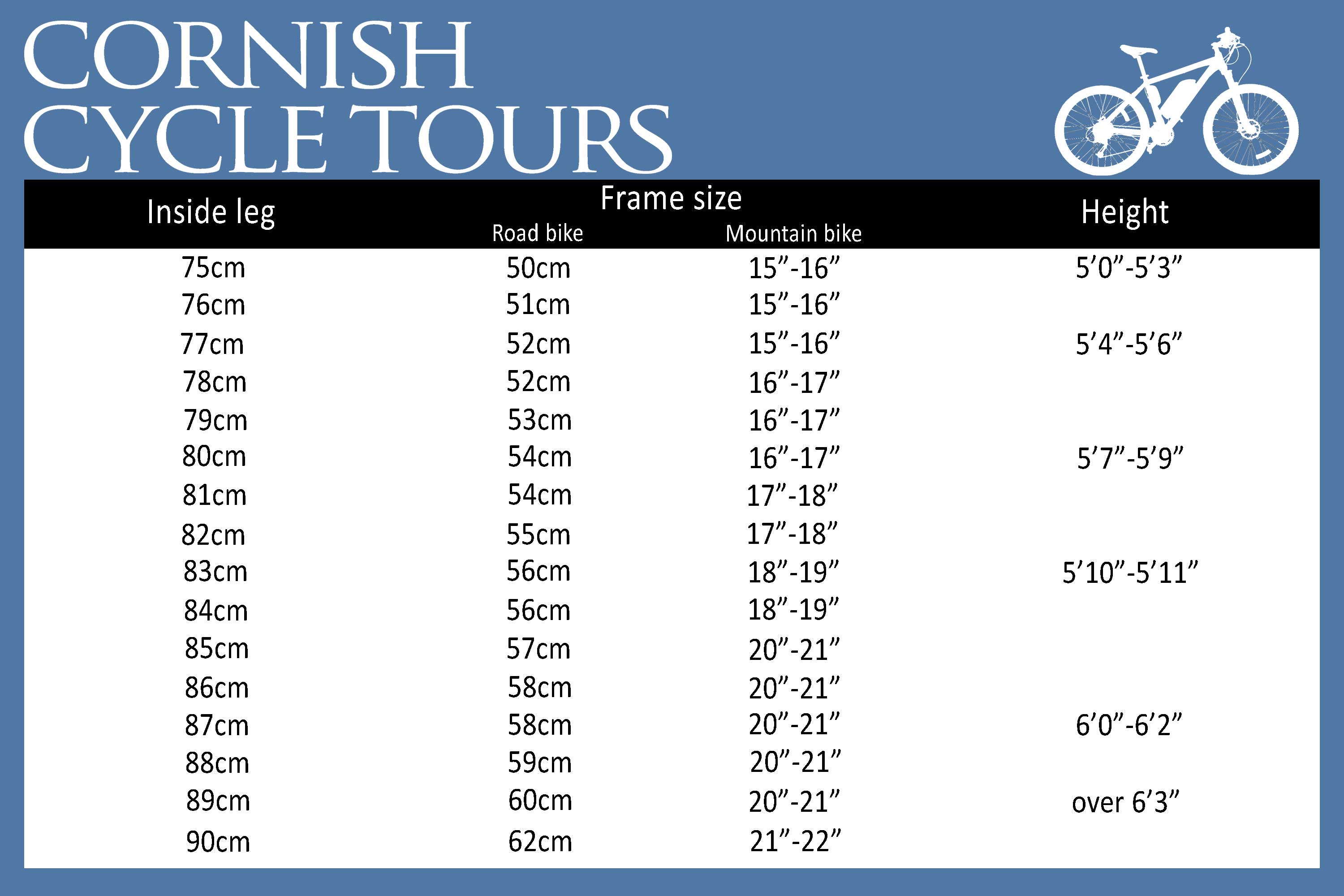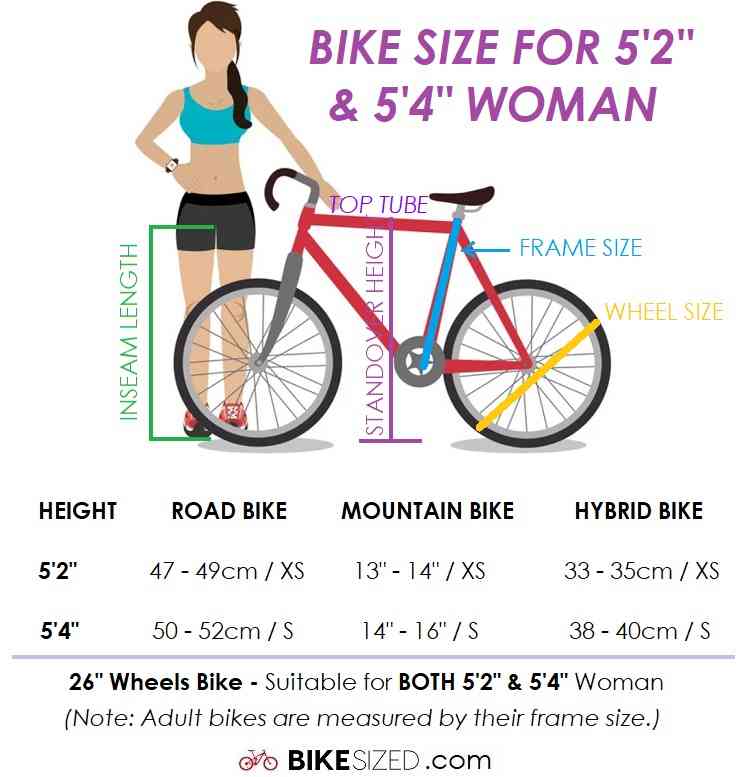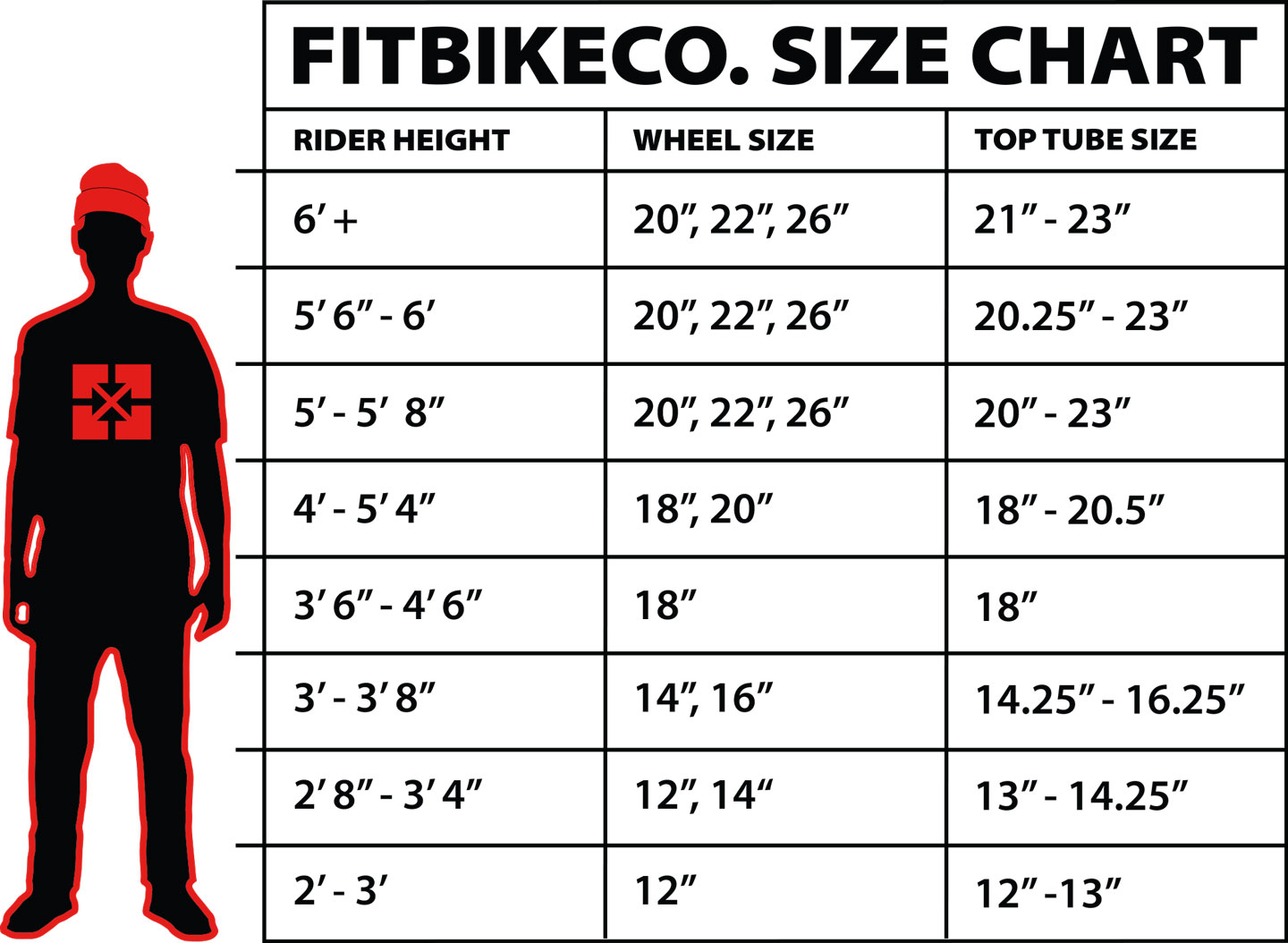Why Bike Size Matters: Avoiding Discomfort and Injury
Finding the right bike size is crucial for a comfortable and enjoyable ride. When a bike is too small or too large, it can lead to a range of issues, including discomfort, pain, and increased risk of injury. In fact, a bike that’s not tailored to a rider’s height can put unnecessary strain on the body, particularly the neck, back, and legs. This can result in fatigue, soreness, and even long-term damage. Furthermore, an ill-fitting bike can affect a rider’s balance, control, and overall performance, making it more difficult to enjoy the ride. By choosing a bike that’s the right size bike by height, riders can ensure a comfortable and efficient ride, reducing the risk of discomfort and injury. Whether you’re a seasoned cyclist or just starting out, finding the right bike size by height is essential for a safe and enjoyable experience.
Measuring Up: How to Determine Your Ideal Bike Size
To find the perfect bike size, it’s essential to take accurate measurements of your height and inseam. This will give you a baseline to work from when selecting a bike that’s tailored to your body. Start by measuring your height in inches or centimeters, making sure to stand up straight and relaxed. Next, measure your inseam by placing a book or ruler between your legs, just above the floor, and measuring the distance from the floor to the top of the book or ruler. This will give you an accurate measurement of your leg length. Once you have these measurements, you can use a bike size chart or calculator to determine your ideal bike size. For example, if you’re 5’9″ (175 cm) with an inseam of 32 inches (81 cm), you may require a bike with a frame size of 18-20 inches (46-51 cm). By taking these measurements and using a size bike by height chart, you can ensure a comfortable and efficient ride.
How to Choose the Right Bike Size by Height: A Step-by-Step Guide
Choosing the right bike size by height is a crucial step in ensuring a comfortable and enjoyable ride. Here’s a step-by-step guide to help you find the perfect fit:
Step 1: Determine Your Height Category
Use a height-to-bike-size chart or calculator to determine your height category. For example, if you’re between 5’2″ and 5’6″ (157 cm and 168 cm), you fall into the small to medium height category.
Step 2: Consider the Type of Bike
Different bike types, such as road, mountain, and hybrid, have varying frame sizes and geometries. For instance, road bikes tend to have a more aggressive geometry, while mountain bikes have a more upright riding position. Consider the type of bike you’re interested in and its corresponding frame size.
Step 3: Check the Frame Size
Once you’ve determined your height category and bike type, check the frame size. A general rule of thumb is to look for a frame size that corresponds to your height. For example, if you’re 5’9″ (175 cm), you may require a frame size of 18-20 inches (46-51 cm).
Step 4: Consider Additional Factors
In addition to height and bike type, consider other factors such as riding style, terrain, and personal preference. For example, if you’re a more aggressive rider, you may prefer a smaller frame size for better maneuverability.
By following these steps and considering the importance of size bike by height, you can ensure a comfortable and efficient ride. Remember to test ride a bike and make adjustments as needed to fine-tune your bike fit.
Understanding Bike Frame Geometry: What You Need to Know
When it comes to choosing the right bike size, understanding bike frame geometry is crucial. Bike frame geometry refers to the measurements and angles of the bike’s frame, which affect the overall fit and ride of the bike. Here are the key factors to consider:
Seat Tube Angle: The seat tube angle affects the rider’s position on the bike. A steeper angle can put more pressure on the rider’s hands and wrists, while a shallower angle can provide a more upright riding position.
Top Tube Length: The top tube length determines the distance between the saddle and handlebars. A longer top tube can provide more comfort and stability, while a shorter top tube can improve maneuverability.
Wheelbase: The wheelbase is the distance between the front and rear wheels. A longer wheelbase can provide more stability, while a shorter wheelbase can improve agility.
Head Tube Angle: The head tube angle affects the bike’s handling and stability. A steeper angle can improve responsiveness, while a shallower angle can provide more stability.
Chainstay Length: The chainstay length affects the bike’s stability and maneuverability. A longer chainstay can provide more stability, while a shorter chainstay can improve agility.
By understanding these factors, you can better determine the right bike size for your height and riding style. Remember, size bike by height is just one aspect of finding the perfect fit. Consider the type of bike, riding style, terrain, and personal preference to ensure a comfortable and enjoyable ride.
Real-Life Examples: Finding the Right Bike Size for Your Height
Now that we’ve covered the basics of bike frame geometry and how to choose the right bike size by height, let’s take a look at some real-life examples to help illustrate the process.
For example, if you’re 5’6″ (168 cm), you may be looking for a road bike with a frame size of 54-56 cm. The Specialized Allez, a popular road bike model, recommends a rider height of 5’5″-5’9″ (165-175 cm) for its 54 cm frame size.
If you’re 5’10” (178 cm), you may be looking for a mountain bike with a frame size of 18-20 inches (46-51 cm). The Trek Fuel EX, a popular mountain bike model, recommends a rider height of 5’9″-6’1″ (175-185 cm) for its 19 inch frame size.
For hybrid bikes, the sizing can vary depending on the specific model and brand. However, as a general rule of thumb, a rider height of 5’7″-5’11” (170-180 cm) may correspond to a frame size of 17-19 inches (43-48 cm).
Remember, these are just general guidelines, and the best way to ensure a comfortable and efficient fit is to test ride a bike and make adjustments as needed. By considering your height, riding style, terrain, and personal preference, you can find the perfect bike size for a comfortable and enjoyable ride.
When choosing a bike size by height, it’s essential to consider the type of bike and its intended use. By doing so, you can ensure a comfortable and efficient fit, regardless of whether you’re cruising around town or tackling rough terrain.
Additional Factors to Consider: Riding Style, Terrain, and Personal Preference
While size bike by height is a crucial factor in finding the right bike size, it’s not the only consideration. Riding style, terrain, and personal preference can also play a significant role in determining the ideal bike size.
Riding style, for example, can affect the bike size needed. Aggressive riders who prefer a more upright riding position may require a smaller frame size, while endurance riders who prioritize comfort may prefer a larger frame size.
Terrain is another important factor to consider. Mountain bikers, for instance, may require a smaller frame size to improve maneuverability on technical trails, while road bikers may prefer a larger frame size for increased stability at high speeds.
Personal preference also plays a significant role in determining bike size. Some riders may prefer a more compact frame size for easier handling, while others may prefer a larger frame size for increased comfort and stability.
When considering these additional factors, it’s essential to think about how you plan to use your bike. Will you be riding on rough terrain or smooth roads? Do you prioritize comfort or speed? By taking these factors into account, you can find a bike size that meets your specific needs and preferences.
Remember, finding the right bike size is not a one-size-fits-all solution. By considering your height, riding style, terrain, and personal preference, you can find a bike size that provides a comfortable and enjoyable ride. Whether you’re a seasoned cyclist or just starting out, the right bike size can make all the difference in your riding experience.
Test Ride and Adjust: Fine-Tuning Your Bike Fit
Once you’ve determined your ideal bike size using the size bike by height guide, it’s essential to test ride the bike to ensure a comfortable and efficient fit. This step is crucial in finding the perfect bike size, as it allows you to make adjustments and fine-tune the fit to your specific needs.
When test riding a bike, pay attention to how your body feels on the bike. Make sure your legs are not too stretched out or too cramped, and that your back is not too arched or too straight. You should be able to maintain a comfortable riding position with ease.
If you find that the bike doesn’t feel quite right, don’t be afraid to make adjustments. Start by adjusting the saddle height to ensure your leg is almost fully extended when the pedal is in its lowest position. Next, adjust the handlebar height to a comfortable position that allows you to maintain a relaxed riding position.
Finally, adjust the pedal position to ensure your foot is in the correct position on the pedal. This will help you maintain a comfortable and efficient pedaling motion.
By test riding a bike and making these adjustments, you can ensure a comfortable and enjoyable ride. Remember, finding the right bike size is not a one-time task – it’s an ongoing process that requires fine-tuning and adjustments to ensure the perfect fit.
By considering your height, riding style, terrain, and personal preference, and by test riding and adjusting your bike, you can find a bike size that provides a comfortable and enjoyable ride. Whether you’re a seasoned cyclist or just starting out, the right bike size can make all the difference in your riding experience.
Conclusion: Finding the Perfect Bike Size for a Comfortable and Enjoyable Ride
In conclusion, finding the right bike size is crucial for a comfortable and enjoyable ride. By considering your height, riding style, terrain, and personal preference, and by following the steps outlined in this guide, you can find a bike size that meets your specific needs.
Remember, choosing the right bike size is not a one-time task – it’s an ongoing process that requires fine-tuning and adjustments to ensure the perfect fit. By test riding a bike and making adjustments to the saddle height, handlebar height, and pedal position, you can ensure a comfortable and efficient fit.
To recap, here are the key takeaways to ensure a comfortable and enjoyable ride:
- Measure your height and inseam to determine your ideal bike size
- Consider your riding style, terrain, and personal preference when choosing a bike size
- Test ride a bike and make adjustments to the saddle height, handlebar height, and pedal position
- Choose a bike size that provides a comfortable and efficient fit
By following these steps and considering the factors outlined in this guide, you can find a bike size that provides a comfortable and enjoyable ride. Whether you’re a seasoned cyclist or just starting out, the right bike size can make all the difference in your riding experience. So, get out there and start riding – with the right bike size, you’ll be pedaling your way to comfort and enjoyment in no time!





